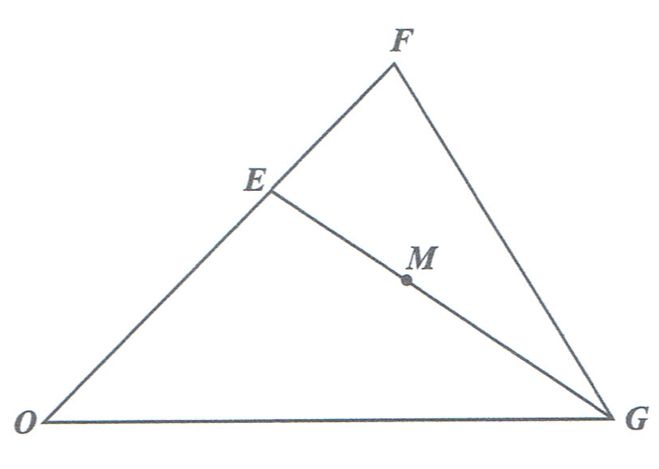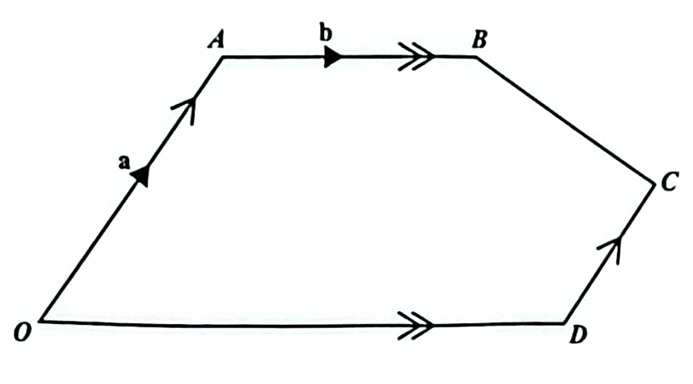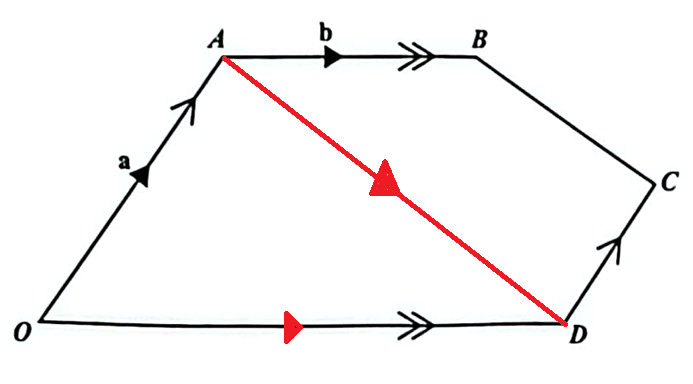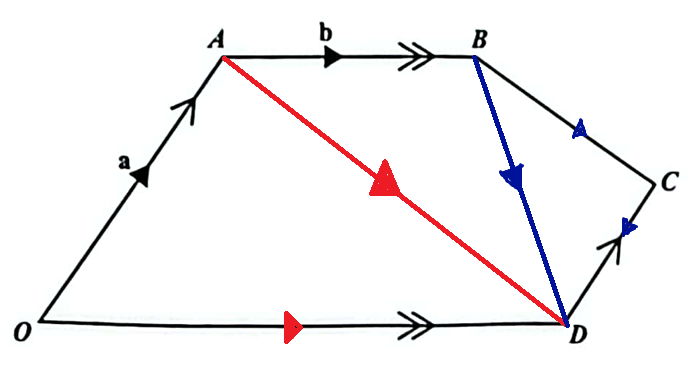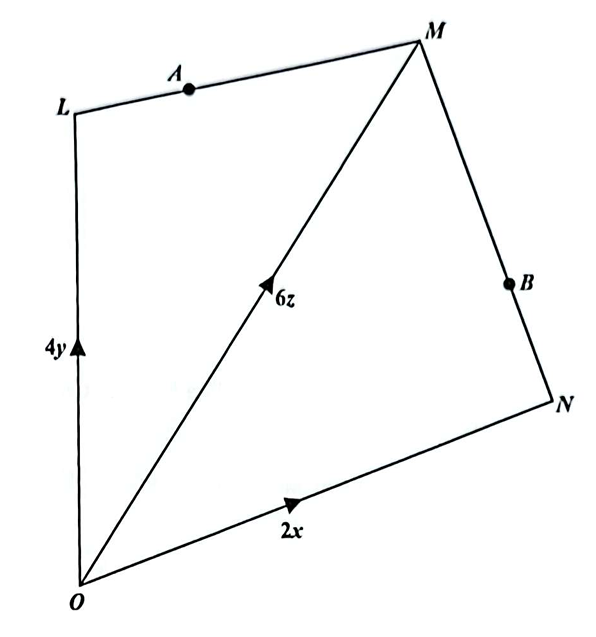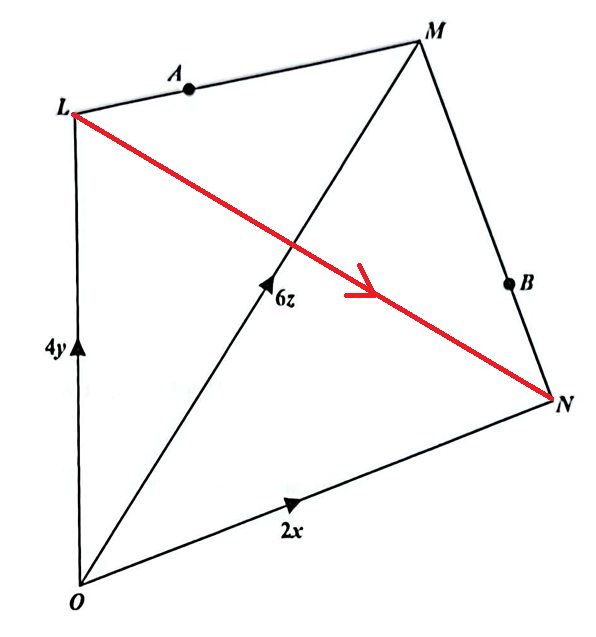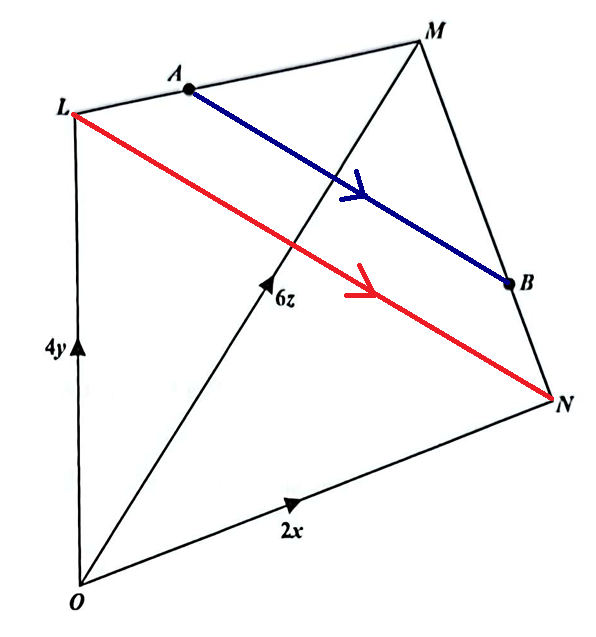Vectors and Scalars
Welcome to Our Site
I greet you this day,
These are the solutions to the CSEC past questions on the topics: Vectors and Scalars.
When applicable, the TI-84 Plus CE calculator (also applicable to TI-84 Plus calculator) solutions are provided
for some questions.
The link to the video solutions will be provided for you. Please
subscribe to the YouTube channel to be notified of upcoming livestreams. You are welcome to ask questions during
the video livestreams.
If you find these resources valuable and helpful in your passing the
Mathematics test of the CSEC, please consider making a donation:
Cash App: $ExamsSuccess or
cash.app/ExamsSuccess
PayPal: @ExamsSuccess or
PayPal.me/ExamsSuccess
Google charges me for the hosting of this website and my other
educational websites. It does not host any of the websites for free.
Besides, I spend a lot of time to type the questions and the solutions well.
As you probably know, I provide clear explanations on the solutions.
Your donation is appreciated.
Comments, ideas, areas of improvement, questions, and constructive
criticisms are welcome.
Feel free to contact me. Please be positive in your message.
I wish you the best.
Thank you.
Symbols and Formulas
(1.) A(x, y)
Point: A
(): parenthesis
x = x-coordinate
y = y-coordinate
(2.) A$\langle x, y \rangle$
Vector: A
$\langle \rangle$: angle brackets
x = horizontal component
y = vertical component
(3.) Given a vector: $\overrightarrow{AB}$
$
\overrightarrow{AB} = \vec{B} - \vec{A} \\[3ex]
first\;\;vector = \vec{A} = \langle A_x, A_y \rangle \\[3ex]
second\;\;vector = \vec{B} = \langle B_x, B_y \rangle \\[3ex]
\overrightarrow{AB} = \langle B_x - A_x, B_y - A_y \rangle \\[3ex]
\overrightarrow{AB} = -\overrightarrow{BA} \\[5ex]
$
(4.) Given a vector: $\overrightarrow{BA}$
$
\overrightarrow{BA} = \vec{A} - \vec{B} \\[3ex]
first\;\;vector = \vec{B} = \langle B_x, B_y \rangle \\[3ex]
second\;\;vector = \vec{A} = \langle A_x, A_y \rangle \\[3ex]
\overrightarrow{BA} = \langle A_x - B_x, A_y - B_y \rangle \\[3ex]
\overrightarrow{BA} = -\overrightarrow{AB} \\[5ex]
$
(5.) Given several vectors:
Notice the colors and the pattern
$
(a.)\;\; \overrightarrow{AB} = -\overrightarrow{BA} \\[3ex]
(b.)\;\; \overrightarrow{CD} = -\overrightarrow{DC} \\[3ex]
(c.)\;\; \overrightarrow{A\color{red}{K}} + \overrightarrow{\color{red}{K}C} = \overrightarrow{AC} \\[3ex]
(d.)\;\; \overrightarrow{U\color{red}{K}} + \overrightarrow{\color{red}{K}S} = \overrightarrow{US} \\[3ex]
(e.)\;\; \overrightarrow{M\color{red}{P}} + \overrightarrow{\color{red}{P}C} + \overrightarrow{\color{red}{C}D}
=
\overrightarrow{MD} \\[5ex]
$
(6.) Given two position vectors: $\overrightarrow{OE}$ and $\overrightarrow{OF}$
$
\overrightarrow{EF} = \overrightarrow{EO} + \overrightarrow{OF} \\[3ex]
\overrightarrow{EF} = -\overrightarrow{OE} + \overrightarrow{OF} \\[5ex]
$
(7.) Given the magnitude of two vectors say: $|A|$ and $|B|$ and the angle between the vectors say $\theta$, the
magnitude of the resultant vector say |R| is given by the Cosine Law for Vectors:
Provided the Triangle Inequality holds:
$
|A| - |B| \lt |R| \lt |A| + |B| \\[5ex]
|R|^2 = |A|^2 + |B|^2 + 2 |A| |B| \cos\theta \\[5ex]
$
(Please NOTE: The Cosine Law for Vectors is different from the Cosine Law for Triangles)
(8.) Given vectors in component form OR unit vectors:
Say for a two-dimensional vector A:
$
\boldsymbol{A}\langle x, y \rangle = x\boldsymbol{i} + y\boldsymbol{j} \\[3ex]
$
Say for a three-dimensional vector C:
$
\boldsymbol{C}\langle x, y, z \rangle = x\boldsymbol{i} + y\boldsymbol{j} + z\boldsymbol{k} \\[3ex]
$
Sum and Difference of Vectors
Assume we have two two-dimensional vectors: C and D:
$
\boldsymbol{C}\langle c_1, c_2 \rangle = c_1\boldsymbol{i} + c_2\boldsymbol{j} \\[3ex]
\boldsymbol{D}\langle d_1, d_2 \rangle = d_1\boldsymbol{i} + d_2\boldsymbol{j} \\[5ex]
\underline{Sum} \\[3ex]
\vec{C} + \vec{D} \\[3ex]
= \langle c_1 + d_1, c_2 + d_2 \rangle \\[3ex]
= (c_1 + d_1)\boldsymbol{i} + (c_2 + d_2)\boldsymbol{j} \\[5ex]
\underline{Difference} \\[3ex]
\vec{C} - \vec{D} \\[3ex]
= \langle c_1 - d_1, c_2 - d_2 \rangle \\[3ex]
= (c_1 - d_1)\boldsymbol{i} + (c_2 - d_2)\boldsymbol{j} \\[5ex]
$
Assume we have two three-dimensional vectors: C and D:
$
\boldsymbol{C}\langle c_1, c_2, c_3 \rangle = c_1\boldsymbol{i} + c_2\boldsymbol{j} + c_3\boldsymbol{k} \\[3ex]
\boldsymbol{D}\langle d_1, d_2, d_3 \rangle = d_1\boldsymbol{i} + d_2\boldsymbol{j} + d_3\boldsymbol{j} \\[5ex]
\underline{Sum} \\[3ex]
\vec{C} + \vec{D} \\[3ex]
= \langle c_1 + d_1, c_2 + d_2, c_3 + d_3 \rangle \\[3ex]
= (c_1 + d_1)\boldsymbol{i} + (c_2 + d_2)\boldsymbol{j} + (c_3 + d_3)\boldsymbol{k} \\[5ex]
\underline{Difference} \\[3ex]
\vec{C} - \vec{D} \\[3ex]
= \langle c_1 - d_1, c_2 - d_2, c_3 - d_3 \rangle \\[3ex]
= (c_1 - d_1)\boldsymbol{i} + (c_2 - d_2)\boldsymbol{j} + (c_3 - d_3)\boldsymbol{k} \\[5ex]
$
(9.) A displacement vector say $\overrightarrow{OA}$ beginning from the origin, O and ending at the point
A is the position vector, $\overrightarrow{A}$
(10.) Section Formula
Given two points say A and B with position vectors: $\overrightarrow{A}$ and $\overrightarrow{B}$
respectively, if a point say C divides the line segment |AC| in the ratio: m:n, then the
position vector of C is given by:
$
\overrightarrow{C} = \dfrac{m\overrightarrow{B} + n\overrightarrow{A}}{m + n} \\[5ex]
$
(11.) Collinearity of Points using Vectors
Given two vectors say: $\overrightarrow{A}$ and $\overrightarrow{B}$ and a scalar say k:
$
Say: \overrightarrow{A} = \langle a_1, a_2 \rangle \\[5ex]
\overrightarrow{B} = \langle b_1, b_2 \rangle \\[5ex]
$
(a.) Scalar Multiple Method
The two vectors are collinear if one is a scalar multiple of the other.
(This concept also demonstrates the linear dependency of two vectors.)
OR
The two vectors are collinear if the ratio of their corresponding components are equal.
$
\overrightarrow{A} = k \cdot \overrightarrow{B} \\[5ex]
OR \\[3ex]
\dfrac{a_1}{b_1} = \dfrac{a_2}{b_2} \\[6ex]
$
(b.) Method of Determinants
Two vectors are collinear if their determinant is zero.
$
\begin{vmatrix}
a_1 & a_2 \\[4ex]
b_1 & b_2
\end{vmatrix} = a_1b_2 - b_1a_2 = 0 \\[7ex]
$
(c.) Dot Product Angle Between the Vectors
If the dot product angle between the two vectors is 0° or 180°, then the two vectors are
collinear.
$
\overrightarrow{A} \cdot \overrightarrow{B} = |\overrightarrow{A}| |\overrightarrow{B}| \cos \theta \\[3ex]
where \\[3ex]
\theta = \text{dot product angle between the two vectors} \\[5ex]
$
(12.) Parallelism of Vectors
Given two vectors, say $\overrightarrow{A}$ and $\overrightarrow{B}$:
Assume a scalar, say k
We can determine if the two vectors are parallel using any of these approaches.
(a.) Direction Vectors
Direction vectors indicate the orientation of a line.
Parallel lines have proportional direction vectors.
Two vectors are parallel if they lie on lines with equations that differ only by a scalar multiple.
(b.) Dot Product
Given the direction of the vectors, the dot product is:
$
A \cdot B = |A| \cdot |B| \cdot \cos\theta \\[3ex]
$
where θ is the angle between the vectors.
If θ = 0° or θ = 180°, the vectors are parallel.
(c.) Scalar Multiples
Vectors $\overrightarrow{A}$ and $\overrightarrow{B}$ are parallel if $\overrightarrow{B} = k \cdot
\overrightarrow{A}$
Also:
If $A = (a_1, a_2, a_3, ...)$ and $B = (b_1, b_2, b_3, ...)$:
the vectors are parallel if the ratio of the corresponding components are equal
$
\dfrac{b_1}{a_1} = \dfrac{b_2}{a_2} = \dfrac{b_3}{a_3} = k \\[5ex]
$
If both vectors are zero vectors, they are considered parallel.
If one vector is a zero vector and the other is not, they are not parallel.
If any calculation of ratios result in undefined values (e.g., dividing by zero), the vectors are not parallel.
(d.) Cross Product (for 3D vectors)
Two vectors are parallel if the cross product: $A \times B$ is zero.
The cross product measures the area of the parallelogram spanned by the two vectors.
An area of zero units means that the vectors lie along the same or parallel lines.
Formula Sheet: List of Formulae
Theorems
(1.) Proportional Segments Theorem for Diagonals in a Quadrilateral
In a quadrilateral, the line segment joining two points that divide opposite sides proportionally or at specific
ratios from a common vertex is parallel to and proportional to the diagonal that does not connect to the vertex.
